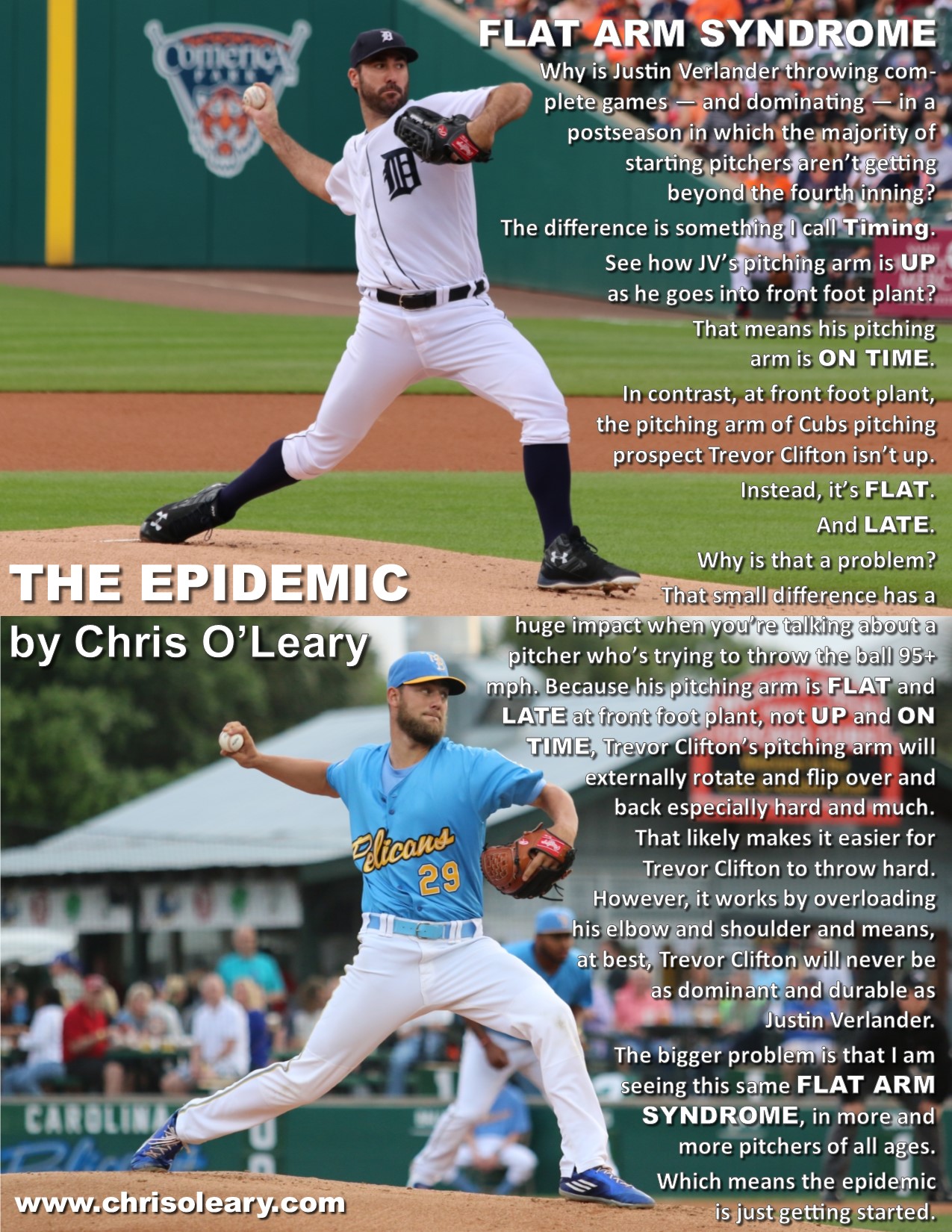 Flat Arm Syndrome is a common pitching flaw in which there is little to no External Rotation or, in the worst case, Internal Rotation, at the commencement of shoulder rotation, which is when the pitching arm starts to come under Load.
Flat Arm Syndrome is a common pitching flaw in which there is little to no External Rotation or, in the worst case, Internal Rotation, at the commencement of shoulder rotation, which is when the pitching arm starts to come under Load.
Flat Arm Syndrome is an easy to visualize way of describing a severe -- and, disturbingly, more and more common -- type of Timing problem in baseball pitchers.
And, increasingly, position players.
My understanding of Flat Arm Syndrome helped me see the problem with Johan Santana's pitching mechanics and understand that, and why, he wasn't going to be the savior the Mets hoped he would be.
Flat Arm Syndrome is a problem because the latest research into pitching mechanics and injuries makes it clear that Timing problems are what's driving the rising incidence of Tommy John surgery and other, even more serious, problems in baseball pitchers.
What does Flat Arm Syndrome look like?
In the picture below, notice how Justin Verlander's pitching arm is UP as he goes into foot plant while Trevor Clifton's pitching arm is FLAT at foot plant.
That is a problem because, if the pitching arm is FLAT, and not UP, at foot plant, that it will increase the distance over which, and the force with which, the pitching arm will externally rotate.
Typically, that first overloads the elbow and then gets the shoulder.
Flat Arm Syndrome
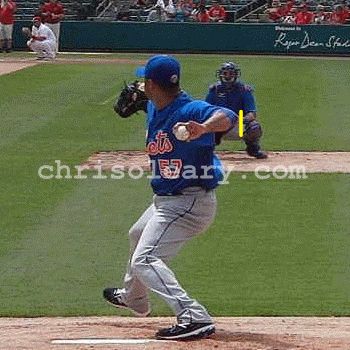 Why is Justin Verlander throwing complete games, and dominating, in a post-season in which the majority of starting pitchers are just trying to get beyond the fourth inning?
Why is Justin Verlander throwing complete games, and dominating, in a post-season in which the majority of starting pitchers are just trying to get beyond the fourth inning?
The difference is something I call Timing.
And it’s visible to the naked eye.
See how, as his shoulders start to rotate, Johan's Santana's pitching arm is FLAT and not UP?
That's bad.
That means Johan Santana’s pitching arm is LATE; it is FLAT when it should be UP.
That will increase the distance over which, and thus the force with which, Johan Santana's pitching arm will externally rotate.
You can see the same thing in the comparison below of Justin Verlander and Trevor Clifton.
See how, at front foot plant, Justin's Verlander's pitching arm is UP and ON TIME. In contrast, and like Johan Santana, Trevor Clifton's pitching arm is FLAT and LATE.

Justin Verlander and Trevor Clifton
I know that seems like a small difference. However, small differences can add up to a huge difference when you’re talking about a pitcher who’s trying to throw the ball 95+ mph.
That difference likely made it easier for Trevor Clifton to throw harder, sooner. However, it is overloading his elbow and shoulder and means, at best, Trevor Clifton will never be as dominant and durable as Justin Verlander.
The bigger problem is that I am seeing Flat Arm Syndrome in more and more pitchers of all ages.
Seeing Flat Arm Syndrome
All you have to look for to see Flat Arm Syndrome is a pitching arm that is FLAT, or nearly so, when the pitcher's front foot is planted and/or their shoulders start rotating.
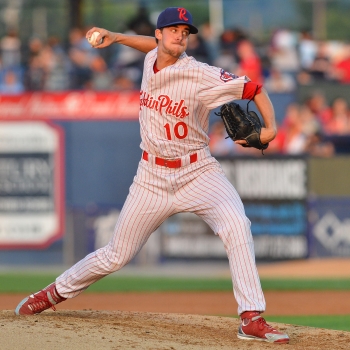
Aaron Nola
That contrasts with Justin Verlander's pitching arm, which is UP as he goes into front foot plant.

Justin Verlander
Technically-Speaking
Flat Arm Syndrome means little to no external rotation or, in the worst case, internal rotation at the commencement of shoulder rotation, which is usually -- but not always -- at front foot plant.
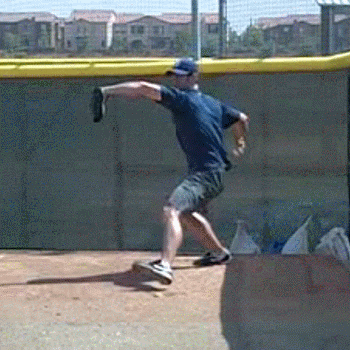
Mark Prior
One thing to keep in mind when judging pitchers' Timing is that, more and more often, and as with Stephen Strasburg, I'm seeing shoulder rotation beginning before foot plant, an especially problematic movement pattern called Early Torso Rotation.
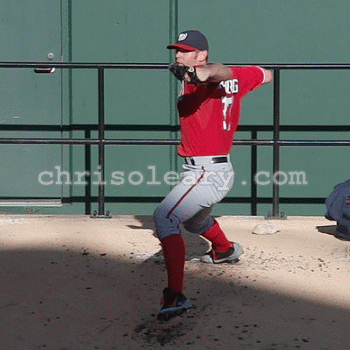
Stephen Strasburg
That means foot plant is no longer a completely reliable marker for judging when the pitching arm comes under load.
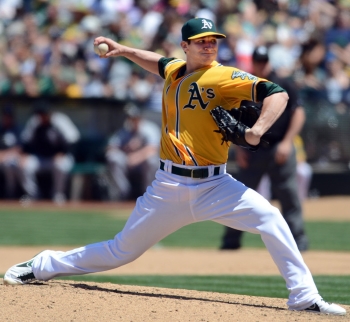
Jarrod Parker
Jarrod Parker is one of the more recent victims of Flat Arm Syndrome, but there are a number of other pitchers who will fall victim to it.

Bundy, Mayo Clinic Power Position, and Verlander
Tragically, Flat Arm Syndrome is advocated and taught by a number of prominent pitching authorities, including the Mayo Clinic via its ironically-named "Mechanics of a Safer Fastball."
Flat Arm Syndrome and Timing
In the picture below of Dylan Bundy, notice how his front foot is down, and his shoulders are starting to turn, but his pitching arm isn't UP.

Dylan Bundy
Instead, it's FLAT.
That is overloading his arm, which likely gave him a velocity boost. However, it's the equivalent of running a car engine past the red line for an extended period of time.
It works.
For a while.
Flat Arm Syndrome is what got Dylan Bundy's elbow and it will get his shoulder next.
Recent research into pitching mechanics and injuries says Timing is the root cause of many pitching injury problems.
Timing is what really matters when it comes to the health of pitchers.
The Inverted W and other arm actions can be problematic, but are only definitely problematic if they create a problem with a pitcher's Timing; if they keep the pitcher's arm from getting UP by the time the front foot plants.
That's why, when I talk about pitchers' Timing, I do so using photos that show the front foot, with it down or nearly so.

Joba Chamberlain
As I first said in 2007, and again in a 2010 interview podcast about Stephen Strasburg and the Inverted W, the problem with arm actions like the Inverted W is they can create Timing problems.
What the not so durable guys do is they take their elbows back but they also take them up. Now, that's actually painful to do, but it's not that bad in and of itself. The problem is that when you take the elbows back and up, you can end up with a Timing problem.
Which is exactly what happened to Mark Prior.
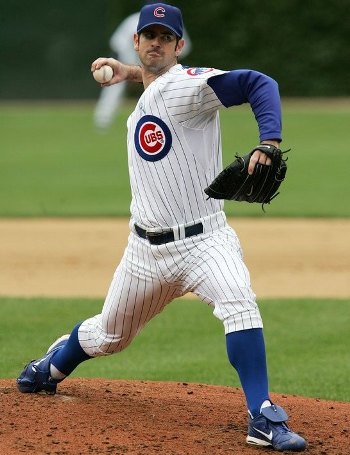
Mark Prior
In the picture above, notice how Mark Prior's front foot is planted but his pitching arm is FLAT, not UP.
That is a problem because it changes when and how much his pitching arm lays back when his shoulders start to rotate.
Flat Arm Syndrome is a movement pattern that very reliably, and predictably, causes starting pitchers to have injury problems.

Henderson Alvarez
Flat Arm Syndrome and Jarrod Parker
Jarrod Parker's 2015 elbow fracture was the precipitating event for the creation of this piece and my discovery of a number of important pieces that relate to The Epidemic.

Jarrod Parker
I believe we are seeing more and more Flat Arm Syndrome because of what I believe is the most dangerous cue.
If you doubt what I said when, or think I'm making post-hoc "predictions" about Jarrod Parker, check the Wayback Machine or The List.
It's May 10, 2015 and I'm sitting here watching a clip in which Jarrod Parker throws what, given his reaction, may very well be the last pitch of his professional career and thinking that I need to do more to make sure that people understand what I think is a huge contributor to the Tommy John Surgery and pitcher injury epidemic.
So here goes.
If you extract the key frames from the clip of that tragic pitch, you will see some things that I think are both relevant and important, starting with his big scap load and a resulting position that I call the Horizontal W.
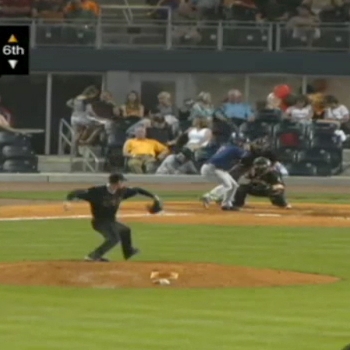
Frame 30
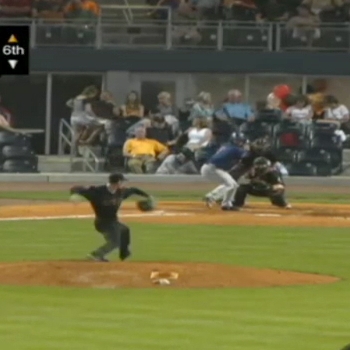
Frame 31
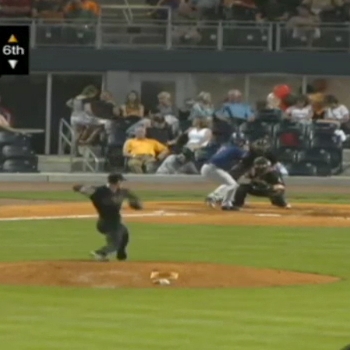
Frame 32

Frame 33
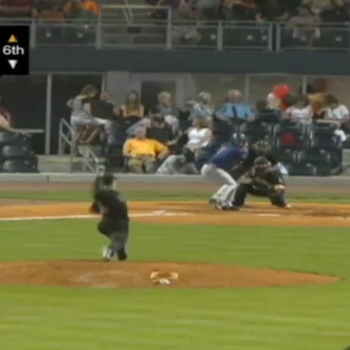
Frame 34
I would guess that many people, if not most, would think that I would focus on Frame 30 or Frame 31, in which Jarrod Parker lifts with his elbows and his elbows go up above the level of his shoulders.
In truth, while I think those frames are interesting, the money frames for me are Frame 32 and Frame 33.
While what you see in Frame 30 and Frame 31 will predispose Jarrod Parker to having a Timing problem, Frame 32 and Frame 33 demonstrate that that problem does indeed occur.

Frame 32
In Frame 32 and Frame 32, notice that Jarrod Parker's front foot is down, and his shoulders are starting to rotate, but his Pitching Arm Side (PAS) forearm is flat and at roughly 0 to 10 degrees of external rotation.

Frame 33
I call this Flat Arm Syndrome because the pitching arm, rather than being UP -- at roughly 90 degrees of external rotation and usually perpendicular to the ground -- and ready to accept the load as you see in pitchers with good Timing, Jarrod Parker's PAS forearm i instead FLAT and parallel to the ground.
And late.
If you are having a hard time seeing exactly what I mean when I talk about the position of Jarrod Parker's arm, here are a few still images that should make it clearer exactly what I'm talking about.
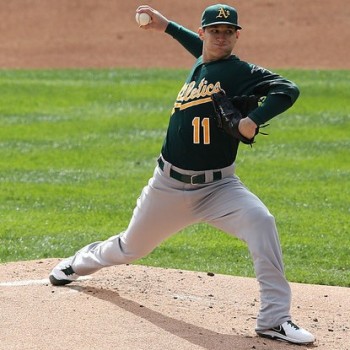
Jarrod Parker

Jarrod Parker

Jarrod Parker
Flat Arm Syndrome is a problem that has become increasingly prevalent over the past 10 to 15 years and, in my opinion, is related to the injury problems of a number of pitchers.
The Problem
For all of the talked about the Inverted W -- and the Inverted V and Inverted L -- at the end of the day, what matters isn't the position a pitcher passes through when they throw, but the impact of that position on a pitcher's Timing; the pitcher's arm must get up to the Ready Position by the time their shoulders start to rotate, which is usually -- but not always -- when their front foot plants.
If the pitcher's arm isn't up -- at roughly 75 to 90 degrees of external rotation -- by the time their shoulders start rotating, that will significantly increase the distance over which, and the force with which, their arm externally rotates and significantly increase the load on their elbow and/or their shoulder. This has been verified by a number of studies, several of which I discuss in my piece on the science of the Inverted W.

Mark Prior
Technically speaking, Flat Arm Syndrome is a low degree of External Rotation, and in the worst case Internal Rotation, at Foot Plant.
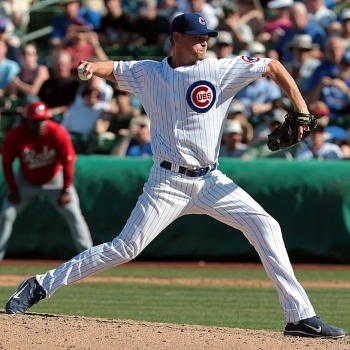
Kerry Wood
Part of the reason why I wonder whether Tom House is the solution or the problem when it comes to the pitcher injury and Tommy John Surgery epidemic is because what he teaches in my opinion encourages the development of Flat Arm Syndrome.

Stephen Strasburg
As I discuss in my analysis of Stephen Strasburg's pitching mechanics, he is another pitcher whose injury problems in my opinion result from his flat arm position when his shoulders start rotating
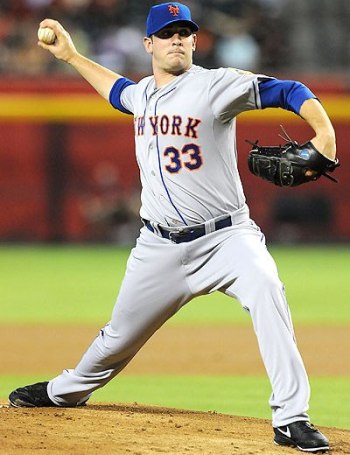
Matt Harvey
Matt Harvey's pitching mechanics are also emblematic of Flat Arm Syndrome, and that was why I saw his elbow injury coming before it happened.
UP = GOOD and FLAT = BAD
In the picture below, notice how -- while the pitching arms of Tom Seaver and Nolan Ryan are UP at foot plant -- the pitching arm of Jose Fernandez is FLAT at foot plant.

Tom Seaver, Jose Fernandez, and Nolan Ryan
In my opinion, and as I discuss at length in my analysis of Jose Fernandez's pitching mechanics, his significantly flatter arm at foot plant is what caused his elbow, and now his shoulder, problems.
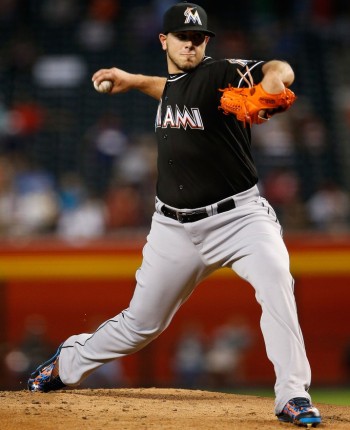
Jose Fernandez
Generally, but not always, the shoulders start to rotate when the front foot plants. If the pitcher's arm is flat at foot plant, that will increase the distance over which, and the force with which, the pitcher's arm will externally rotate. That will increase the load on the elbow and the shoulder.
In my opinion Jose Fernandez's flat arm at foot plant is what caused his elbow, and now his shoulder, problems and could very well mean that his career, at least as a starter, is over.
He just doesn't know it yet.
Flat Arm Syndrome and Problematic Arm Actions
What is the connection between Flat Arm Syndrome and the Inverted W, Inverted L, Inverted V, Power T, Premature Pronation, and other problematic movement patterns I discuss?
Those problematic arm actions tend to -- and I mean "tend to" and not "always do" -- create a problem Flat Arm Syndrome.
They do that by lengthening and/or slowing down the arm swing and arm action, which significantly increases the likelihood that the arm will be late; that it will not be in a safe position at the moment the shoulders start rotating. This will often yield short-term velocity gains but will also significantly increase the risk of an arm problem (elbow or shoulder).
Other Prominent Cases of Flat Arm Syndrome
Jose Fernandez is just the most recent prominent victim of Flat Arm Syndrome. Over the past few years, I have seen Flat Arm Syndrome end the careers of a number of pitchers, sometimes in a heart-rending manner.
Johan Santana
As I discuss at length in my analysis of Johan Santana's Pitching Mechanics, I first encountered Flat Arm Syndrome when looking at his arm action.
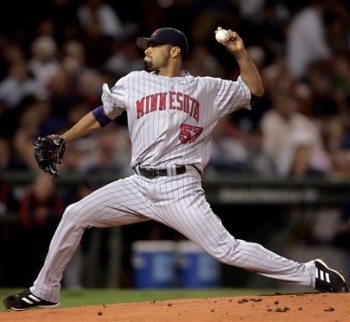
Johan Santana
In sum, while I could find plenty of still pictures in which Johan Santana looked like his pitching mechanics were good, when I looked at video clips of him that were shot from center field, I saw something unusual.
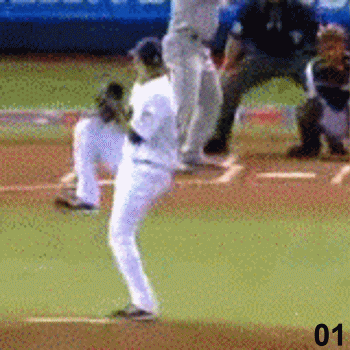
Johan Santana
While most pitchers' shoulders don't start rotating until their front foot lands, Johan Santana's shoulders started rotating when his foot was up in the air and, more importantly, while his arm was FLAT and not UP.
Mark Prior
When I first started analyzing pitchers, I started off by comparing Mark Prior and Greg Maddux. As I discuss in my various analysis of Mark Prior's pitching mechanics, I very quickly noticed that one major difference between them was the position of their arms when their front foot was down.

Mark Prior
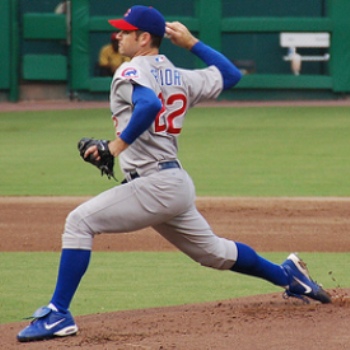
Mark Prior
As a result, Mark Prior's pitching arms would end up in unusual positions when he threw the ball.
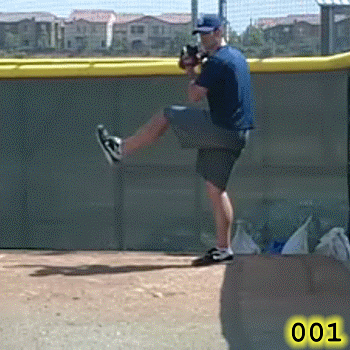
Mark Prior
In 2010, I acquired a clip that made it very clear the impact that this had on Mark Prior's timing.

Mark Prior
The thing to pay attention to is how Mark Prior's shoulders start to rotate when the heel of his front foot lands and while his pitching arm is flat. His shoulders then rotate at an increasingly rapid rate as his front foot plants.
And while his arm is still flat.
As I discuss at length in Tom House: The Solution or The Problem? I have significant questions about whether Tom House has learned from his experience with Mark Prior. On the home page of the National Pitching Association's web site is a picture of a pitcher -- it looks like Mark Prior -- at the flat arm position that, in my opinion, is the true cause of Mark Prior's arm problems.
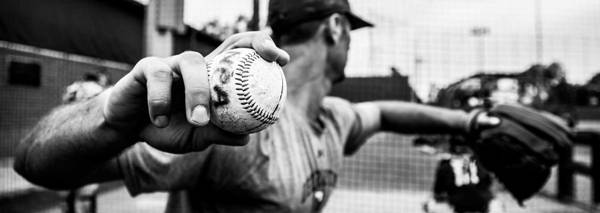
NPA Web Site Banner
Stephen Strasburg
As I discuss in my analysis of Stephen Strasburg's pitching mechanics, he is another pitcher whose shoulders start rotating before his foot plants and who has a significant timing problem as a result.

Stephen Strasburg
In the photograph above, notice how Stephen Strasburg's front foot is down but his arm is still flat.

Stephen Strasburg
In video clips of Stephen Strasburg, what is easy to see is his Inverted W; how, after breaking his hands, he lifts with his elbows.

Stephen Strasburg
What's harder to see, but much more important is how Stephen Strasburg's shoulders start rotating, his Pitching Arm Side elbow starts coming around, and his pitching arm starts to be loaded, while his arm is flat.
Other Examples of Flat Arm Syndrome
Since then, I have noticed the same pattern in the pitching mechanics of a number of pitchers with injury problems.
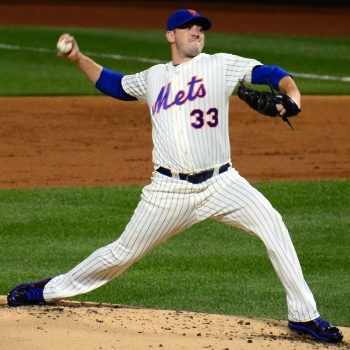
Matt Harvey
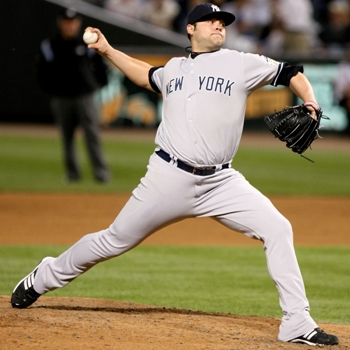
Joba Chamberlain

Ivan Nova
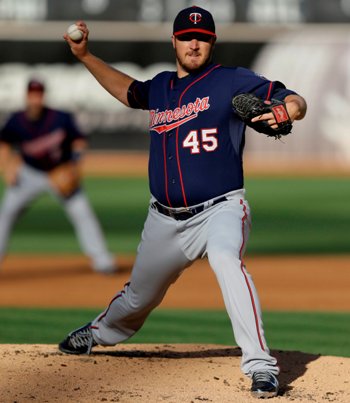
Phil Hughes

Aaron Crow
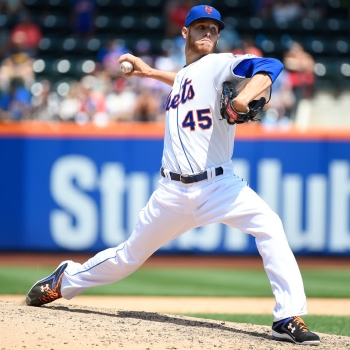
Zack Wheeler
Flat Arm Syndrome is a problem because it increases the distance, and thus the force, with which the pitcher's arm will externally rotate. That in turn will increase the torque and the stress on the elbow and the shoulder.
My understanding of Flat Arm Syndrome is one thing that enables me to make highly accurate predictions of injuries in pitchers.
Current Examples of Flat Arm Syndrome
A number of current pitchers are experiencing injury and effectiveness problems due to Flat Arm Syndrome.

Henderson Alvarez

Matt Cain

Trevor Clifton

Jim Henderson
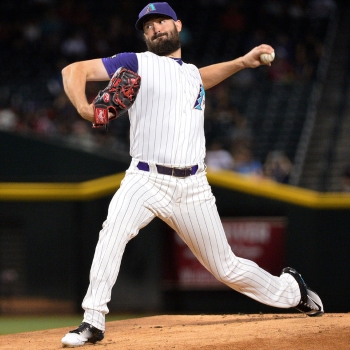
Robbie Ray
Scientific Support
The claims in this piece are supported by the finding of a number of the studies that I discuss in The Science Behind The Epidemic.